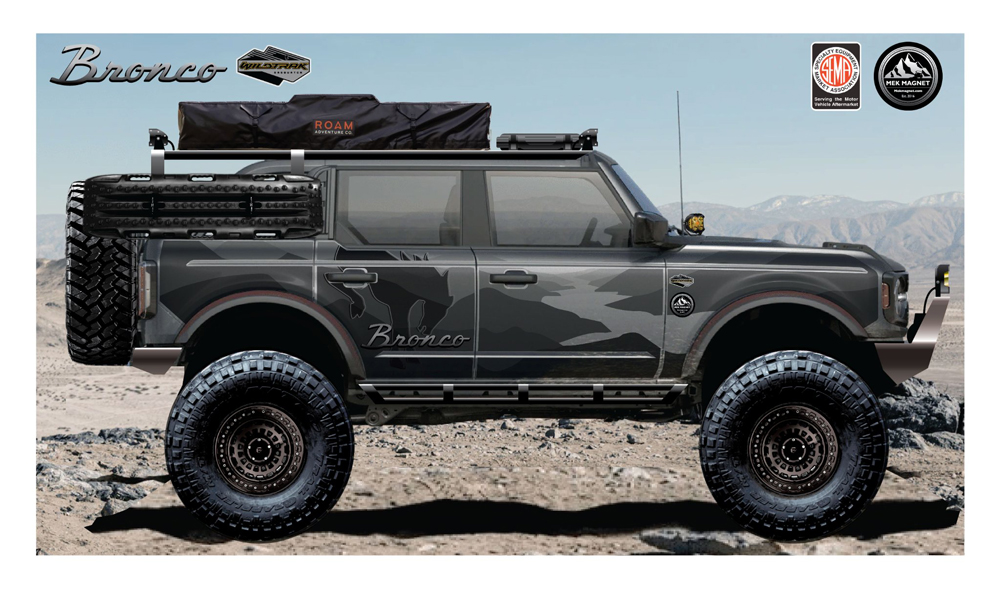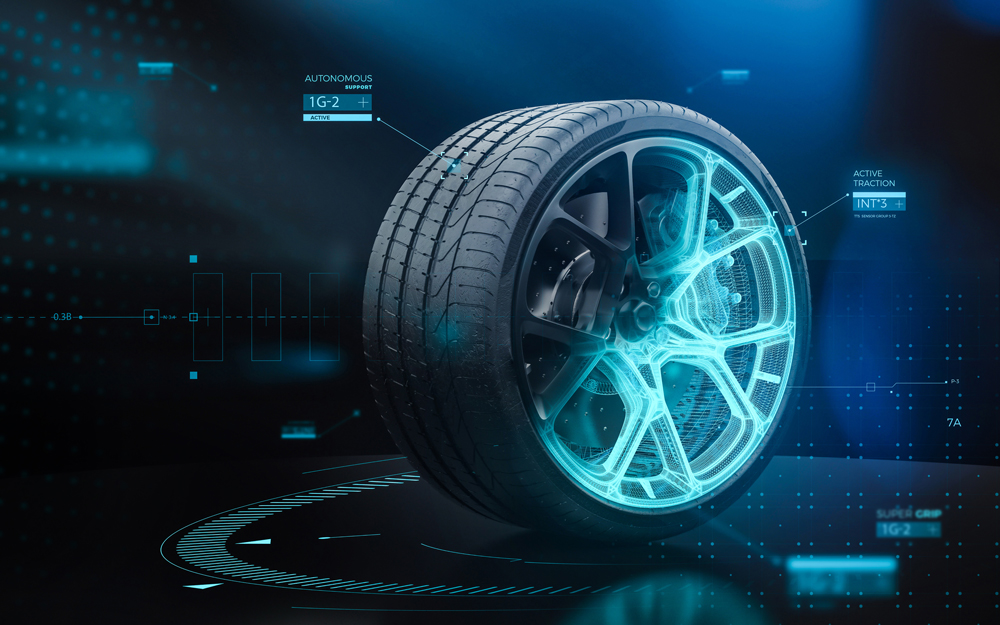OPPORTUNITIES AND CHALLENGES
SEMA Council and Network Leaders Identify the Trends and Issues Impacting the Aftermarket in 2024
By MICHAEL IMLAY
Every new year offers an opportunity to reflect on recent challenges and achievements and chart a future course. With the first quarter of 2024 well underway, SEMA magazine again turns to association council and network leaders for their takes on the market trends and issues impacting key industry categories, along with their expectations for the next 11 months. SEMA councils and networks are on the cutting edge of the latest changes and best business practices sweeping their aftermarket segments. These volunteer organizations also play a major role in shaping and growing their respective industries for the benefit of all. Moreover, they provide networking opportunities that can enhance personal, professional and business growth. To learn more about SEMA councils and networks, attend their events, or become an active volunteer member, visit sema.org/councils-networks.
In December 2023, we presented statements from five of SEMA’s nine councils and networks. This month we present insights from the remaining four, based upon interviews with council leadership. What follows has been edited for clarity and
conciseness.
SEMA Businesswomen’s Network
Sara Morosan, LGE-CTS Motorsports, Chair
Tiffanie Hartenstein, Oracle Lighting, Chair-Elect
The SBN’s mission is to provide networking, education and recognition opportunities for professional women within the industry. We’re also about encouraging women to join the industry.
Currently, the SBN has more than 700 members and is very diverse. In the past, members were mostly drawn from larger companies, but now we’re seeing membership growing among freelancers and individuals from smaller companies. Female-owned businesses within the industry are also increasing in number—many of them second-generation shops where women have inherited the businesses started by their parents. We’re also seeing growing numbers of women in marketing, as well as those stepping into their own brands and companies.
Last year the SBN celebrated its 30th anniversary. It’s rewarding to see how our network has evolved over the years. We marked the milestone with an all-female Ford Bronco build, which came 10 years after a similar Mustang build. It was amazing seeing our younger women coming in, creating new connections and having the same experience many of us had a decade ago. The Bronco sold for nearly $60,000 on eBay, with proceeds going to SEMA charities.
Other 2023 programs included our second Women Leadership Forum. This women-only symposium is designed to foster networking, learning and personal and professional growth. This March, we will take the symposium to Texas, making it more accessible to women from the East Coast.
We also recently started a male allyship program to advance the conversation about women in the workplace. We have presented three webinars on the topic, and will continue to grow these webinars in 2024. Our main goal this year is to enhance current programs and leverage social media to highlight women’s contributions to the industry. We want to show younger women that they have significant roles to play in the aftermarket. We have also created an internet space where members can freely talk about issues and situations and
share advice.
As we enhance the programs we already have, we are also constantly exploring new ideas to serve SBN members. We look forward to each new generation of industry women who join our network, our conversations, and our ongoing work to network, educate and empower all our members.

Future Leaders Network (FLN)
Matt Beenen, Mountech, Chair
Jerod Suchy, BuiltRight Industries, Chair-Elect
FLN’s core mission is to cultivate young talent in the automotive aftermarket through education and networking. Since the only limiting factor for involvement is being under the age of 40, our membership is comprised of individuals from every corner and segment of the industry.
Our diverse talent pool also allows us to draw on the experiences of sales, marketing, operations, customer service and engineering professionals. Because of this, FLN generally has a good finger on the pulse of trends and consumer behaviors.
If we could broadly quantify what consumers and enthusiasts want from industry companies, it would be “value and authenticity.” Most of our membership saw last year as one of holding steady, with some members reporting slight growth for their companies or industry categories. Overall, it seemed a year of “normalization” after a couple years of accelerated growth.
We see our industry constantly evolving with technological advancements. Consolidations of brands and supply-chain partners make it more important to leverage individual relationships than ever. Additionally, the hybrid workspace model has made it clear that hiring for cultural fit within your organization (rather than résumé stats alone) is an important component to keeping an engaged and enthusiastic workforce.
FLN members often say that these changes consistently challenge them to think deeply about long-term visions and trends to ultimately find new opportunities within their specific market segment. One opportunity our members are leveraging is
artificial intelligence. Incorporating AI into day-to-day work flows has helped many to optimize their efficiency and provide value to their organizations.
The most significant challenges to our membership include overreach by the U.S. Environmental Protection Agency/California Air Resources Board, National Highway Traffic Safety Administration, Bureau of Land Management and other enforcement/regulatory bodies. We have consistently helped to get our membership engaged with the SEMA Political Action Committee, stay updated on relevant issues within their segments, and network with members across SEMA councils and networks to help facilitate cooperation on these issues.
We have also received so much positive feedback from our first two Professional Development Program courses that we are adding a second level to the series for individuals who complete level one and wish to further their leadership skills. We are also working on a few proposals to overhaul and bring new vision to the SEMA Launch Pad program.
As always, individuals can engage with FLN by attending our general membership meetings, stopping by one of our many regional networking events, or simply dropping us an e-mail.
Truck and Off-Road Alliance (TORA)
Matt Reasoner, Real Truck, Chair
Dawson D. Druesedow, 4 Wheel Performance, Chair-Elect
TORA membership includes manufacturers, wholesalers, dealers/installers and e-commerce businesses in the truck and off-road space. Our members cater to off-road enthusiasts,
outdoors-people, overlanders, fleet- and work-truck owners, as well as everyday truck owners.
Popular category accessories continue to be bed covers, steps, lifts and wheels and tires. All things considered, our category is holding steady; however, lack of new-truck inventory has been replaced with high interest rates for new-vehicle buyers. We’re also seeing more consumers steering away from “wants” and focusing primarily on “needs” as inflation runs rampant. In contrast, fleet business is one of the bright spots. Many municipalities and corporations spent the past 18–24 months waiting for trucks to become available and are finally seeing the trucks delivered.
Workforce struggles continue to affect all segments of the truck and off-road category. Manufacturers, dealers and warehouse distributors alike are all facing challenges in finding reliable, trustworthy staff seeking long-term employment. These staffing issues have created extended lead times in many cases as manufacturers struggle to keep up with
demand. This ultimately results in a chain reaction that resonates all the way to the end consumer.
On the technology front, as OE manufacturers continue to add new tech into nearly all trim levels of vehicles, we have seen many product categories change to accommodate. One category that has been affected the most is bumpers. Our businesses must ensure that the product is ADAS-compatible without loss of functionality.
As for opportunities, we’ve seen the overlanding category absolutely explode since the pandemic. Racking systems, rooftop tents, storage and security are all growing product segments.
Meanwhile, the economy is the largest challenge for all of us. Amid inflation, the 2024 election and international instability, consumers are seeing less disposable income and are being much more
conservative with how they spend it.
Public land preservation is another issue very close to our hearts. Government overreach continues to run rampant across the nation, and threatens the ability of our customers to recreate responsibly on public land. One of our main objectives as a council is to raise awareness of responsible recreation and engage membership with pressing legal regulations that are threatening our businesses and livelihoods. We’re working closely with SEMA’s Washington, D.C., team to stay abreast of issues.
We are also continuing to work with the side-by-side (UTV) community to bring them more into
the fold. While our method of going to market is somewhat different, we share a common interest in preserving public lands and OHV areas. Any legislation that potentially prevents access is detrimental to both of our communities, and we are stronger
as one voice.

Wheel & Tire Council (WTC)
Michael Lusso, Hennessy Industries, Chair
Brett Kinsfather, Shopmonkey, Chair-Elect
WTC businesses and industry professionals are a diverse group of management and executive-level leaders in the manufacturing, distribution, retail, business services and media sectors of the wheel and tire industry. Our consumers encompass nearly every automotive enthusiast. While vehicle use may vary along with style and performance, wheels and tires are consistently on the’ purchasing radars of enthusiasts.
Overall, the wheel and tire category experienced incremental growth in 2023, with a variety of changes among individual segments, such as growth in the Tier-4 tire segment. While a pullback in some consumer spending had an impact on the more trend-driven wheel and tire combos, other segments have remained strong.
There are other important wheel and tire trends to report as well. First, we’ve seen a shift in demand from larger-diameter, single-use wheels and tires toward multi-use aftermarket wheel-and-tire combos. This shift to a multi-use preference tends to rise when consumers are attempting to maximize their purchases with the disposable income they have available.
Second, technological advancements in ADAS, electric vehicles and connectivity devices continue to grow. All these have vehicle and market impacts well beyond wheels and tires.
Third, over the last couple of years, organizations have continued to consolidate. Most notable are Goodyear’s purchase of Cooper/MT, Wheel Pros’ purchase of Transamerican Auto Parts, and Fox Factory’s purchase of Custom Wheel House.
At the same time, access to technology continues to be ever more affordable. As a result, businesses that once perhaps could not afford the technology required to optimize tire inventories or engage customers with a modern digital-first approach can now do so.
In addition, 3D visualization and customization tools allow customers to virtually test-fit aftermarket wheels on their vehicles before making a purchase, ultimately creating an enhanced digital-first shopping experience. Moreover, advanced sensors embedded in tires can provide real-time data on things like tire pressure, temperature and tread wear. This type of data gathering can not only help drivers properly maintain their tires, it can help the manufacturers and other organizations such as fleets optimize the tires they are either making or maintaining.
The increasing number of EVs on the road also presents an emerging opportunity. Thanks to factors like their increased weight, lower center of gravity, and torque, tires on EVs wear exponentially faster than on ICE vehicles. As a result, tire manufacturers are expanding their EV offerings, while wheel manufacturers are finding ways to reduce unsprung weight.
The most significant challenges facing our segment include the expansion of non-emissions regulations that place additional restrictions on tire manufacturers. For example, Georgia is now making the distributors responsible for tire-sales fee collections, thus impacting supply-chain operations for one state.






